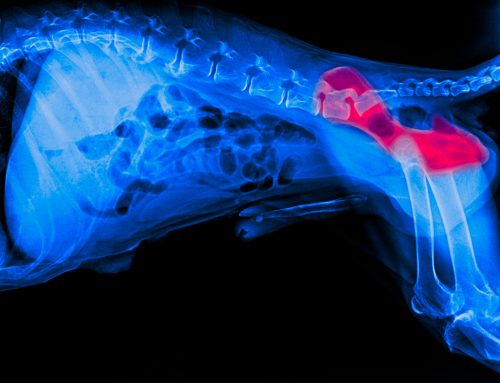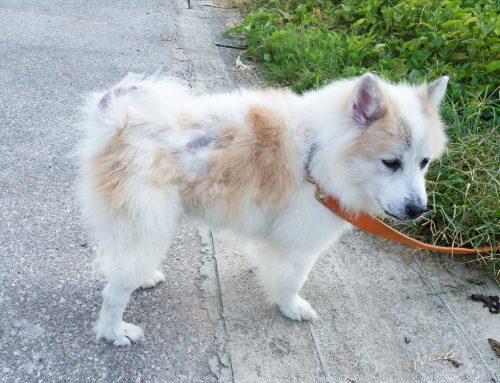Anesthetic procedures can be scary for pet owners, but anesthesia medications pose little risk for healthy pets as long as the appropriate precautions are taken. Our American Animal Hospital Association (AAHA)-accredited team at Boca Midtowne Animal Hospital explains the steps we take to minimize your pet’s anesthetic risk, and put your mind at ease.
Preanesthetic precautions for pets
Before putting your pet under anesthesia, we perform several diagnostic tests to ensure your pet is healthy enough to undergo the procedure. These include:
- Physical examination — We thoroughly evaluate your pet, assessing their temperature, mucous membranes, heart, and lungs, to ensure no abnormalities are present that would increase their anesthetic risk.
- Weight status — Obese pets have an increased anesthetic risk. We weigh your pet and assess their body condition score to determine their weight status, and, if they are overweight, we may postpone their procedure until they lose the excess pounds. If this is necessary, we will devise a weight loss program to help your pet safely lose weight.
- Blood work — Pets who have underlying health conditions, such as kidney disease, anemia, and liver abnormalities, are at increased anesthetic risk. We perform a complete blood count (CBC) and a biochemistry profile to assess your pet’s overall health. If you have a senior pet, we may recommend additional testing before proceeding with the anesthetic procedure.
- Oxygen saturation — Brachycephalic pets, such as pugs, bulldogs, Boston terriers, and Persian cats, have anatomical abnormalities that put them at increased risk for respiratory complications during anesthesia. We use pulse oximetry on these pets to obtain a baseline oxygen saturation reading to help ensure anesthesia won’t significantly compromise their respiration.
Anesthetic precautions for pets
We typically administer a sedative to help ease the induction process, and several precautions are taken to keep your pet safe during anesthesia. These include:
- Intravenous (IV) catheter — An IV catheter is placed so we can administer medications easily. This also allows us to give your pet fluids to support their cardiovascular system.
- Endotracheal intubation — An endotracheal tube is placed to administer inhalant anesthetic gasses and keep the airway open. This tube also protects your pet’s lungs from accidental inhalation of foreign material such as blood, water, saliva, and stomach contents.
- Body temperature — Anesthetized pets have a tendency to lose body temperature, and small pets, such as toy breed dogs, cats, puppies, and kittens, are at increased risk for hypothermia during anesthesia. Maintaining normal body temperature is also important to ensure the anesthetic drugs are metabolized appropriately. Supplemental heat sources, such as warming blankets, are used to help keep your pet’s temperature between 100 and 102.5 degrees while they are anesthetized.
- Cardiovascular system — We carefully monitor your pet’s cardiovascular system during anesthesia. A trained veterinary professional is responsible for monitoring their heart rate, pulse pressure, mucous membrane color, and capillary refill time.
- Echocardiogram (ECG) — An ECG continuously monitors your pet’s heart rhythm to ensure no arrhythmias occur that would increase their anesthetic risk.
- Blood pressure — We measure your pet’s blood pressure to monitor their hemodynamic status.
- Oxygen saturation — We use a pulse oximeter to ensure your pet receives adequate oxygen during anesthesia.
- Anesthetic depth — We monitor your pet’s anesthetic depth throughout anesthesia by evaluating their heart rate, eye position, ocular reflexes, and muscle tone. We adjust their anesthetic plane as needed based on these parameters.
- Pain management — We administer appropriate pain medications to ensure your pet is as comfortable as possible during and after anesthesia.
Postanesthetic precautions for pets
We place your pet in a quiet area after their procedure, and a trained veterinary professional monitors them closely until they are fully recovered. External heat sources are used to keep their body temperature from falling below normal, and their endotracheal tube is left in place until they are able to swallow. In some cases, we administer a reversal agent to help speed up recovery.
Tips to minimize your pet’s risk

If your pet has an upcoming anesthetic procedure, you may be wondering how you can help minimize their risk. Tips include:
- Keeping your pet at a healthy weight — Monitor your pet’s weight, and calculate their daily energy requirements to ensure they stay at a healthy weight.
- Bringing your pet in for wellness checks — Your pet should be evaluated by a veterinary professional at least once a year. This helps us detect health issues in their early stages before they can cause a serious problem for your pet.
- Providing your pet’s medical history — Ensure our veterinary professionals know if your pet has had a reaction to a medication, and tell us about all medications and supplements they are taking.
- Following directions — Before an anesthetic procedure, we will provide directions, such as removing food and water at a specific time. Ensure you follow all instructions carefully, and if you forget to do that, let us know before your pet’s procedure.
We understand if you are apprehensive about your pet’s upcoming anesthetic procedure, but your pet’s safety is our top priority. We go to great lengths to ensure your pet is monitored as closely as possible so they can recover uneventfully. If your pet needs a procedure that requires anesthesia, contact our Fear Free team at Boca Midtowne Animal Hospital to ensure your pet receives optimal care.








Leave A Comment